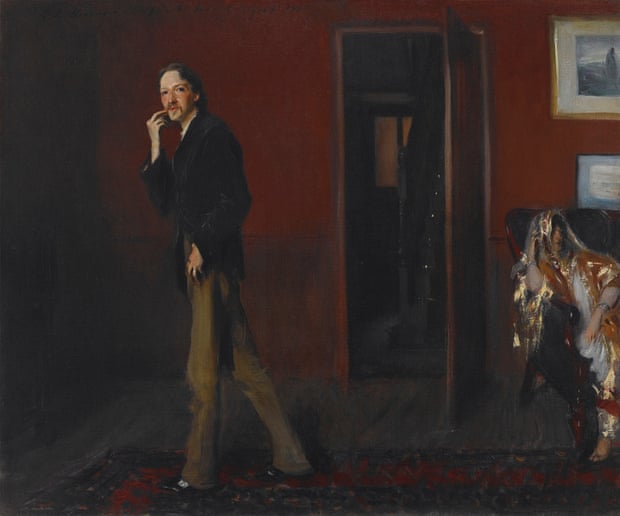With two readings, “How John Singer Sargent Made a Scene” by Sarah Churchwell and “Every Portrait Tells a Lie” by Debra Brehmer, the artist John Singer Sargent became much more real to me. The way he enjoyed a break from painting by playing piano, talked to himself and paced while lost in the art, gifted a lady a painting and was rejected, felt apprehensive about the criticism his best work, Madame X, was receiving, and strived to keep his private life away from the public eye was all revealed in “How John Singer Sargent Made a Scene“.
In “Every Portrait Tells a Lie“, Brehmer argues that portraits depict whatever the subject presents (arguing kids facing the camera with smiles on their faces) and the artist wants to capture (Dad wanted a happy family Christmas photo). Famous earlier portraitists did the same; the subjects of paintings had to pose for extended periods of time and Picasso chose to immortalize Gertrude Stein with a distorted face.
 With this idea in mind, it became clear to me that his portraits were altered to show what he wanted to immortalize and seemed more personal thereafter. With all the talk in class and in the previous essays on Sargent’s many influences, it didn’t seem that he had his own style – just a copy and blend of others’ styles. Now it is apparent that Sargent sought to immortalize his subjects in a form that put all the focus on them. The shadowing in the background and lighting on their faces drew attention to the subjects and left few distractions for the observer.
With this idea in mind, it became clear to me that his portraits were altered to show what he wanted to immortalize and seemed more personal thereafter. With all the talk in class and in the previous essays on Sargent’s many influences, it didn’t seem that he had his own style – just a copy and blend of others’ styles. Now it is apparent that Sargent sought to immortalize his subjects in a form that put all the focus on them. The shadowing in the background and lighting on their faces drew attention to the subjects and left few distractions for the observer.
I also connected this idea of artists choosing how to display subjects and subjects choosing how to display themselves with Humans of NY, one of my favorite blogs. Subjects choose what to wear and how to behave every day, actions that attract the attention of the HONY photographer. Then during the interview, they choose what parts of themselves and their lives to reveal. But ultimately it’s up to the photographer to decide which quote becomes a caption and which picture gets posted. By having a diverse selection of subjects and stories, the photographer humanizes strangers to the world. But “Every Portrait Tells a Lie” immediately brought to mind this picture, where I recall several comments bringing to attention American ignorance toward the Middle East and not realizing they had malls just as shiny as ours when all we see on the news are refugees and wars in deserts. Just as the subjects can lie, so can the media.
 canvas. James describes it as “impossible to forget, of which the most striking characteristic is its simplicity, and yet which overflows with perfection” (p.3). Sargent created this work after a trip to Spain, where he began to idolize Velasquez, a Spanish painter from the 15th century, even more. Sargent used Velasquez as an inspiration for many of his paintings. Some even say that Sargent is second to Velasquez in the art world.
canvas. James describes it as “impossible to forget, of which the most striking characteristic is its simplicity, and yet which overflows with perfection” (p.3). Sargent created this work after a trip to Spain, where he began to idolize Velasquez, a Spanish painter from the 15th century, even more. Sargent used Velasquez as an inspiration for many of his paintings. Some even say that Sargent is second to Velasquez in the art world.
 Robert Louis Stevenson and His Wife by John Singer Sargent (1885). Courtesy of Crystal Bridges Museum of American Art, Bentonville, Arkansas. Photography by Dwight Primiano
Robert Louis Stevenson and His Wife by John Singer Sargent (1885). Courtesy of Crystal Bridges Museum of American Art, Bentonville, Arkansas. Photography by Dwight Primiano
 ortrait, he/she is desperately trying to make the piece accurate and represent the subject’s actual emotions. I also believe that this is a generational difference, we see hundreds of selfies posted all over social media with fake smiles now. The overwhelming majority of the youngest generation has no interest in sitting for hours for a painting that will just hang on a wall and never get looked at. The self portrait has become a method of communication in the past few years. People use selfies to convey emotion that may be accurate or not, it has become so easy to fake a smile for a picture that it is now out of the ordinary to not put aside one’s feelings of sadness in order to have a nice picture. We have seen this for a few decades now with, as Brehmer tells us, the family portrait. I can guarantee you that if you have a sibling, that at one time or another you have also experienced her example with a family portrait of your own. You and your sibling might be at each others throats and ready to kill one another, but then out of the blue, mom wants a nice picture, so you are forced to put your quarrels to rest and pretend like you are the best of friends, and that portrait is definitely a lie.
ortrait, he/she is desperately trying to make the piece accurate and represent the subject’s actual emotions. I also believe that this is a generational difference, we see hundreds of selfies posted all over social media with fake smiles now. The overwhelming majority of the youngest generation has no interest in sitting for hours for a painting that will just hang on a wall and never get looked at. The self portrait has become a method of communication in the past few years. People use selfies to convey emotion that may be accurate or not, it has become so easy to fake a smile for a picture that it is now out of the ordinary to not put aside one’s feelings of sadness in order to have a nice picture. We have seen this for a few decades now with, as Brehmer tells us, the family portrait. I can guarantee you that if you have a sibling, that at one time or another you have also experienced her example with a family portrait of your own. You and your sibling might be at each others throats and ready to kill one another, but then out of the blue, mom wants a nice picture, so you are forced to put your quarrels to rest and pretend like you are the best of friends, and that portrait is definitely a lie.








Recent Comments